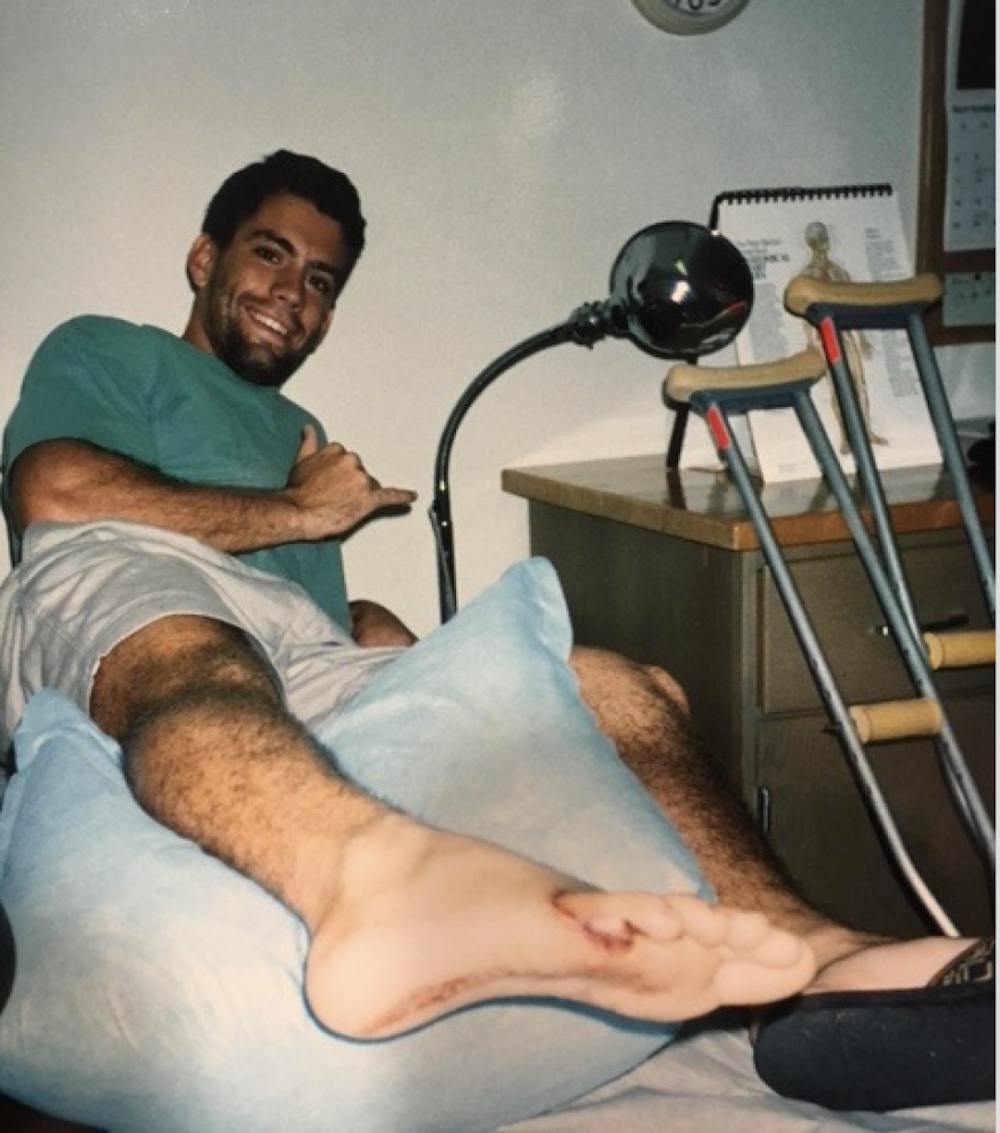A Florida man discovered the owner of the tooth lodged in his foot after 25 year thanks to UF researchers.
Editor of Florida Sportsman magazine Jeff Weakley, 46, tweezed a particle out of his foot and sent it in for DNA testing to the Florida Program for Shark Research at the Florida Museum of Natural History last fall. After being lodged in his foot for nearly a quarter of a century, researchers confirmed it was a tooth from a blacktip shark bite in 1994.
In the fall of 1994, Weakley traveled from his college, Stetson University, for an annual sorority and fraternity party on the coast of Flagler Beach. While surfing with his friends, he felt a bite and immediately saw blood trickling off his foot.
“I don't recall any significant pain, but it was kind of a shock,” Weakley said.
Weakley paddled to the shore, and his friends rushed him to the emergency room. The nurses spent time flushing out the wounds and removing any contaminants.
“I didn't at the time think about a thing or two launched in my foot,” Weakley said.
About 15 years ago, Weakley tweezed a tooth out of his foot from the original accident. When he tweezed the second tooth out last fall, he had just read an article about Gavin Naylor’s work with UF’s first DNA sequence in Florida shark research program.
The article inspired Weakley to send in the tooth for investigation.
Tyler Bowling, manager of Florida Program for Shark Research, worked directly with the DNA sequencing project.
“Given harsh conditions, such as being inside a living person with heat and moisture — traditionally, DNA wouldn’t survive,” Bowling said. “But it seemed it was protected enough that we were able to record the tooth.”
The tooth was identified as a three-to-five foot blacktip shark, which is common in the waters Weakley was surfing, Bowling said.
Lei Yang, the shark program laboratory manager, said they began doing DNA sequencing last year.
“As museum researchers, we specialize on working on difficult samples,” Yang said. “The recent study of the shark bite incident made us realize that the techniques we are using may be more powerful and generally applicable than we originally thought.”
In 2018, there were 16 cases of unprovoked shark attacks in Florida according to the International Shark Attack Files, Yang said.
Weakley continues to surf and fish, he said. He’s grateful for the connections UF’s Shark Research Program is making between shark and human interactions.
“It's pretty wild because I still might have a tooth in there from this same shark 24 years ago,” he said. “I guess in some ways, maybe I'm part shark.”
Jeff Weakley, 46, at his follow up appointment about a week after the bite in 1994. This is a hospital in Deland, right by Stetson University, where he was a student at the time.
Jeff Weakley in 1995, little over a year after the bite.
The tooth he removed from his foot in 2018 before he sent it to Gavin Naylor at FLMNH. The tooth was measured at a half centimeter long.






